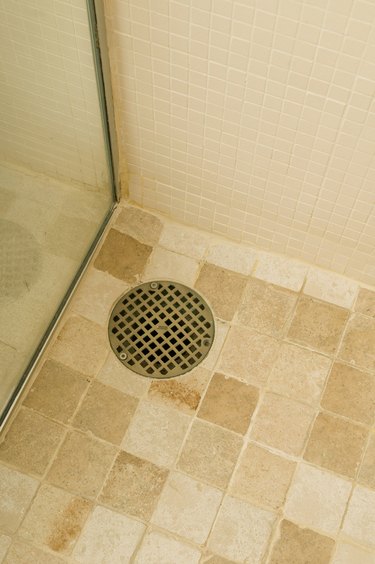
A home's blueprints determine the location of all rooms, including those that require plumbing, such as kitchens and bathrooms. During the construction process, the plumber makes provisions for drainage by installing drainpipes in walls or beneath a basement floor. In the case of basement showers, the contractor runs the drain lines before pouring the basement floor. The contractor leaves an access, however, called a rough-in, so you can install a shower later.
Drainage Systems
Video of the Day
All plumbing fixtures in the house run to one main sewer line, which usually is buried beneath the basement floor. In some houses, the main sewer line may not be as deep, but in either case, a basement shower drain will lie beneath the floor. If the sewer main is beneath the basement floor, the shower drainpipe will connect to it directly. If the sewer main is above the basement floor, the shower drainpipe will run to a pit. The pit can remain empty until you decide to install a shower, sink or commode in the basement. At that time, you'll also have to install a sewer lift in the pit to collect the waste, grind it and pump it up to the main sewer line.
Video of the Day
Above Grade
The plumber installs shower rough-ins for above-grade bathrooms as well as for future ones in the basement. These rough-ins are not below concrete, but they are below the subfloor. The plumber installs these stubs right after the builder frames the shell of the house. Large shower units are positioned in the bathroom, but the plumber will not hook them up to the roughed-in plumbing stubs until the construction is further along.
Basement Rough-In
The basement shower rough-in features a small square where the contractor did not pour concrete but, instead, covered the plumbing stub with sand. This is necessary because a shower drain must have a P-trap beneath the shower that connects the drain to the drainpipe. When you decide to install a basement shower, you will dig out the sand and connect the shower drain to the stub.
Alternate System
If your home builder did not make provisions for a future basement bathroom and you don't want to break out the concrete, you still can install a shower by using an up-flush system. These systems work on the same principle as sewer lifts, but no buried pit is required. The collection tank fits on the back of a special commode, and you can connect the shower and sink drains to the tank. The caveat is that you must elevate the shower to allow enough room beneath to install a low-profile P-trap before running the drain line on top of the floor to the up-flush tank.